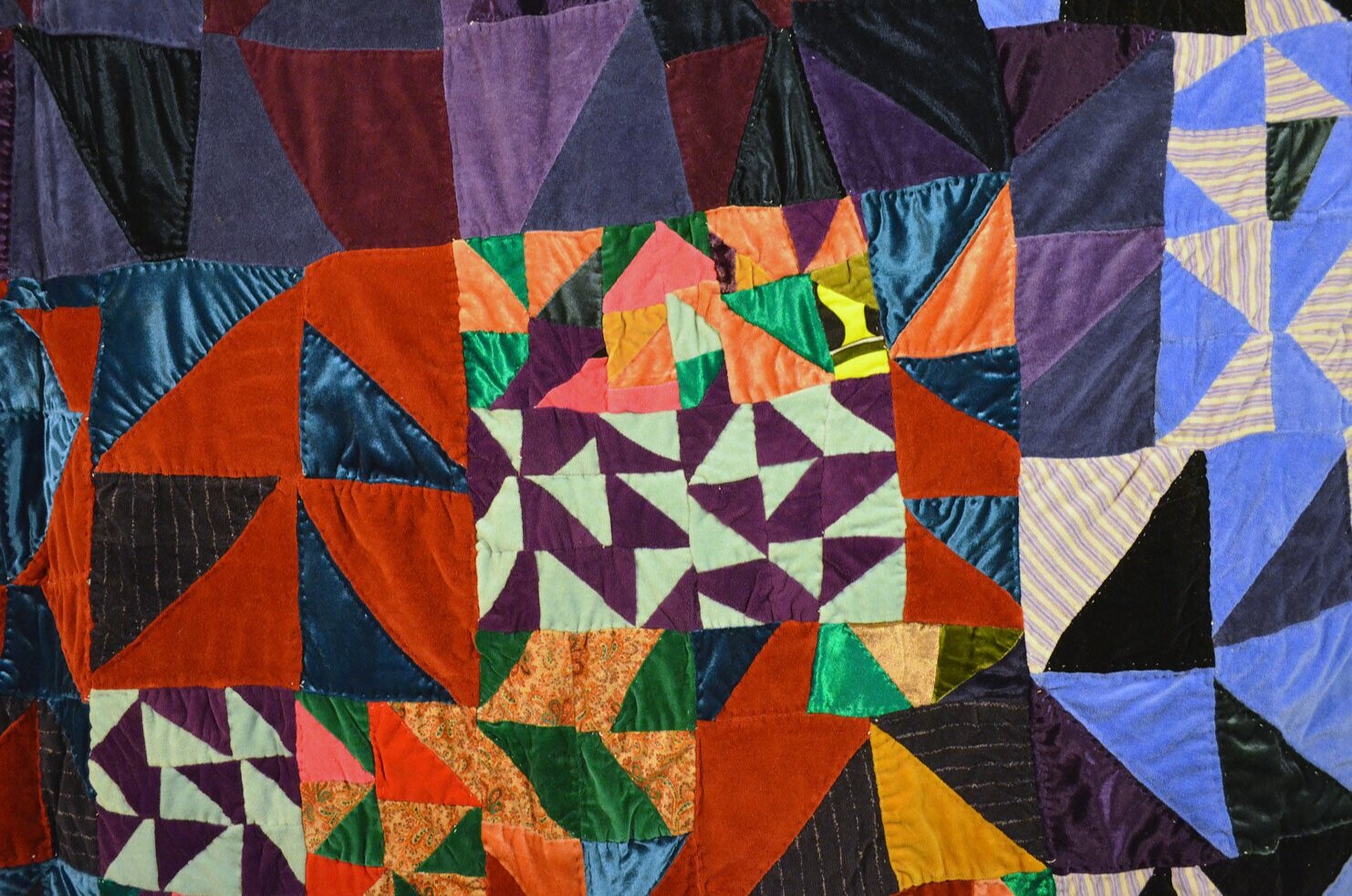The Rhythm of Freedom: Improv Quilting and Antiracism

Rosie Lee Tompkins, quilt detail
I entered the main gallery at the Ackland Museum of Art at UNC-Chapel Hill, in the early 90’s, to the sound of Grammy nominated jazz musician, Nnenna Freelon singing, and felt awe as I encountered for the first time the quilts of Rosie Lee Tompkins (Effie Mae Howard), Arbie Williams, Lavern Brackens and other African-American quilters in the exhibition Who’d A Thought It. The quilts spoke truth. They were a witness, a presence, inviting me to be free. The role and goal of my work as a maker and artist, since that encounter, has been to share the liberating practice of improv through patchwork, and all that entails…
collaborating through listening and responding, affirming and building
dissolving perfectionism by embracing mistakes and pattern variation
honoring process over outcome, discovery over efficiency, and being present over keeping busy
harnessing emotional energy to speak truth, rather than focusing on technical mastery or originality.
paying attention to preferences, habits and limits (unlearning)
nurturing flexibility and radical acceptance (yes and)
awakening personal agency and responsibility
sitting with discomfort and staying curious on the edge of the unknown
welcoming diversity and surprise (disruption) into the quilt story
It’s important to note that black quiltmakers speak their truth and share their stories in a variety of quilting styles and technique, beyond improv. Concurrently, improv is a process inherent to all human beings. Improv encourages us to truly see, hear, and value others, which strengthens relationships and communities and encourages risk-taking, innovation and change.
As I learn more about white supremacy culture and how I’ve been privileged and racialized, I’m discovering that antiracist ideas and actions are actually fundamental to improvisational process. To be an antiracist is to be a person who acts to liberate others and self by opposing racist ideas and policies. As I continue to actively unlearn racism, and realign my thoughts and actions with antiracism, the way I teach and hold space in my improv workshops, as well as the curriculum, will speak more directly to the connections between improv and antiracist practice and action. To my students and fellow improvisors do not be afraid to join this journey of hope and transformation!
The good news is that racist and antiracist are not fixed identities. We can be a racist one minute and an antiracist the next. What we say about race, what we do about race, in each moment determines what—not who—we are. —Ibrham X. Kendi, from How To Be An Antiracist
Resources
Rosie Lee Tompkins Virtual Tour at the Berkeley Art Museum
The Radical Quilting of Rosie Lee Tompkins, NY Times Article
Nnenna Freelon at the Kennedy Center, 1997, speaking/singing about rhythm and communication start at 9:30 minutes
Carolyn Mazloomi: Quilting The Collective History, NEA interview
Women of Color Quilters Network
Eli Leon’s Flickr stream, includes scans of quilt images maker profiles and other texts from the Who’d A Thought It exhibition.
Talks with Eli Leon, from my blog archive daintytime.net
How Improv Changes Your Brain, 2019, Psychology Today
Your Brain on Improv, 2010, Ted Talk by Charles Limb
The Characteristics of White Supremacy Culture, From Dismantling Racism: A Workbook for Social Change Groups, by Kenneth Jones and Tema Okun, ChangeWork, 2001
How To Be An Antiracist by Ibrham X. Kendi, 2019
